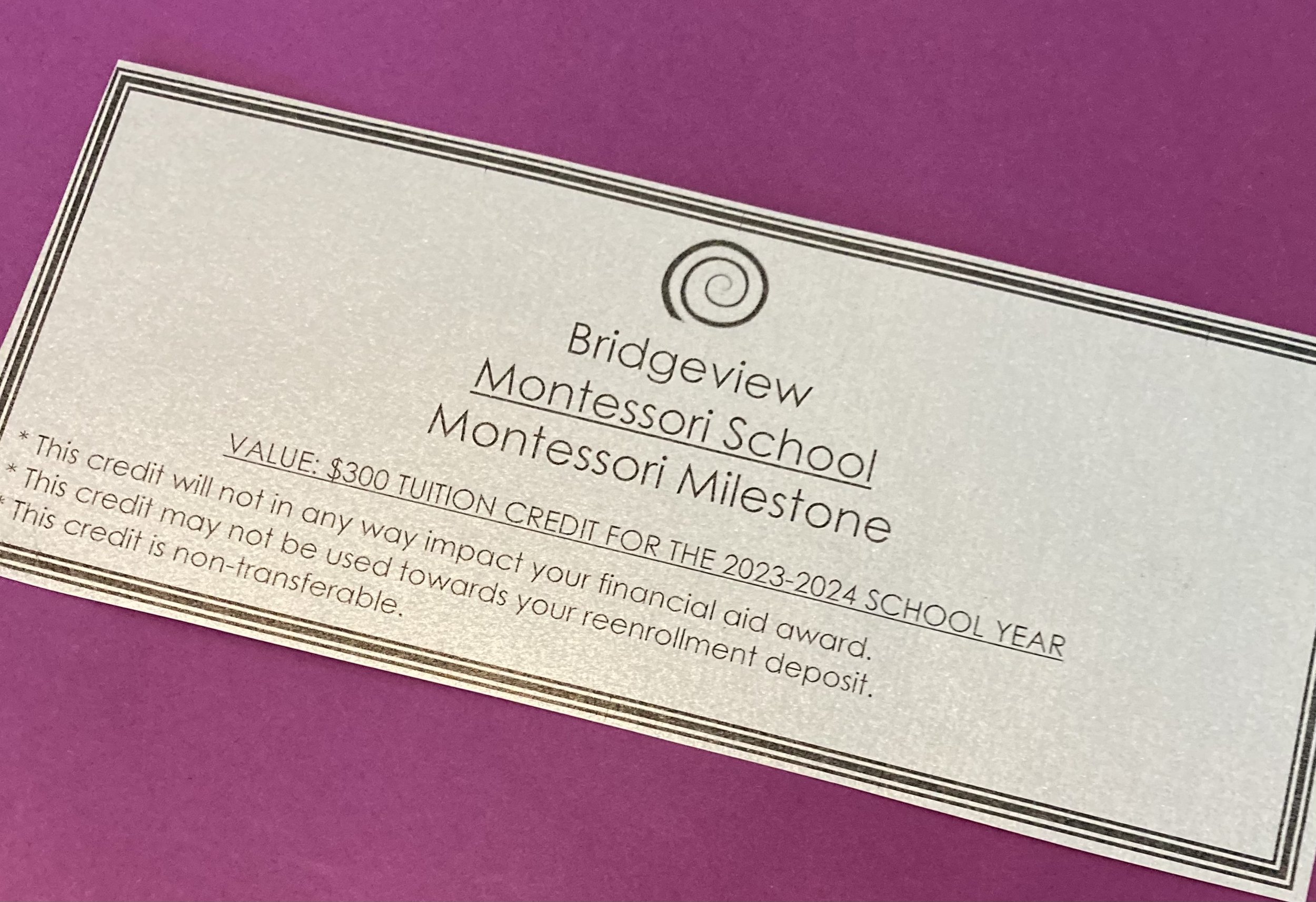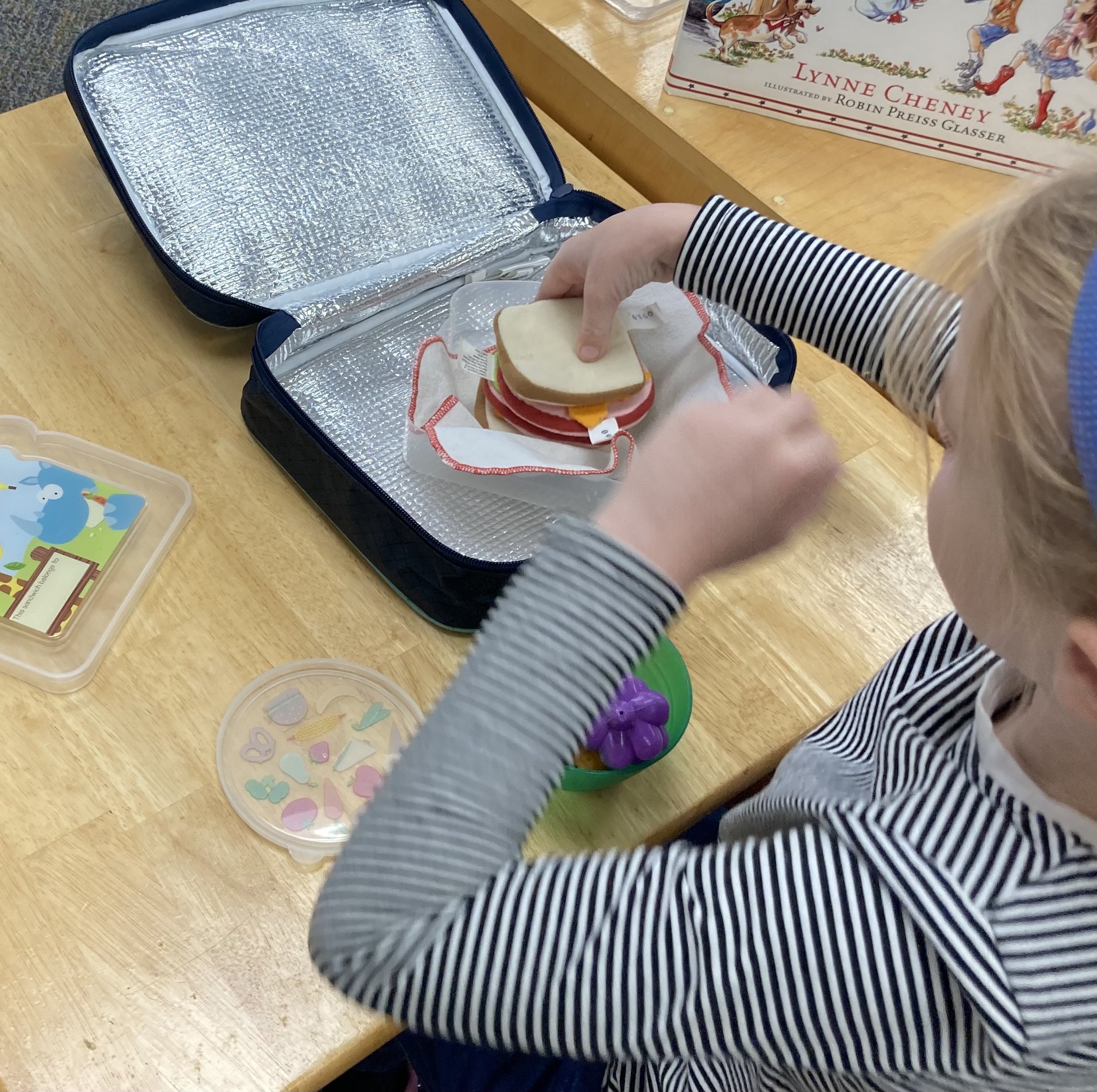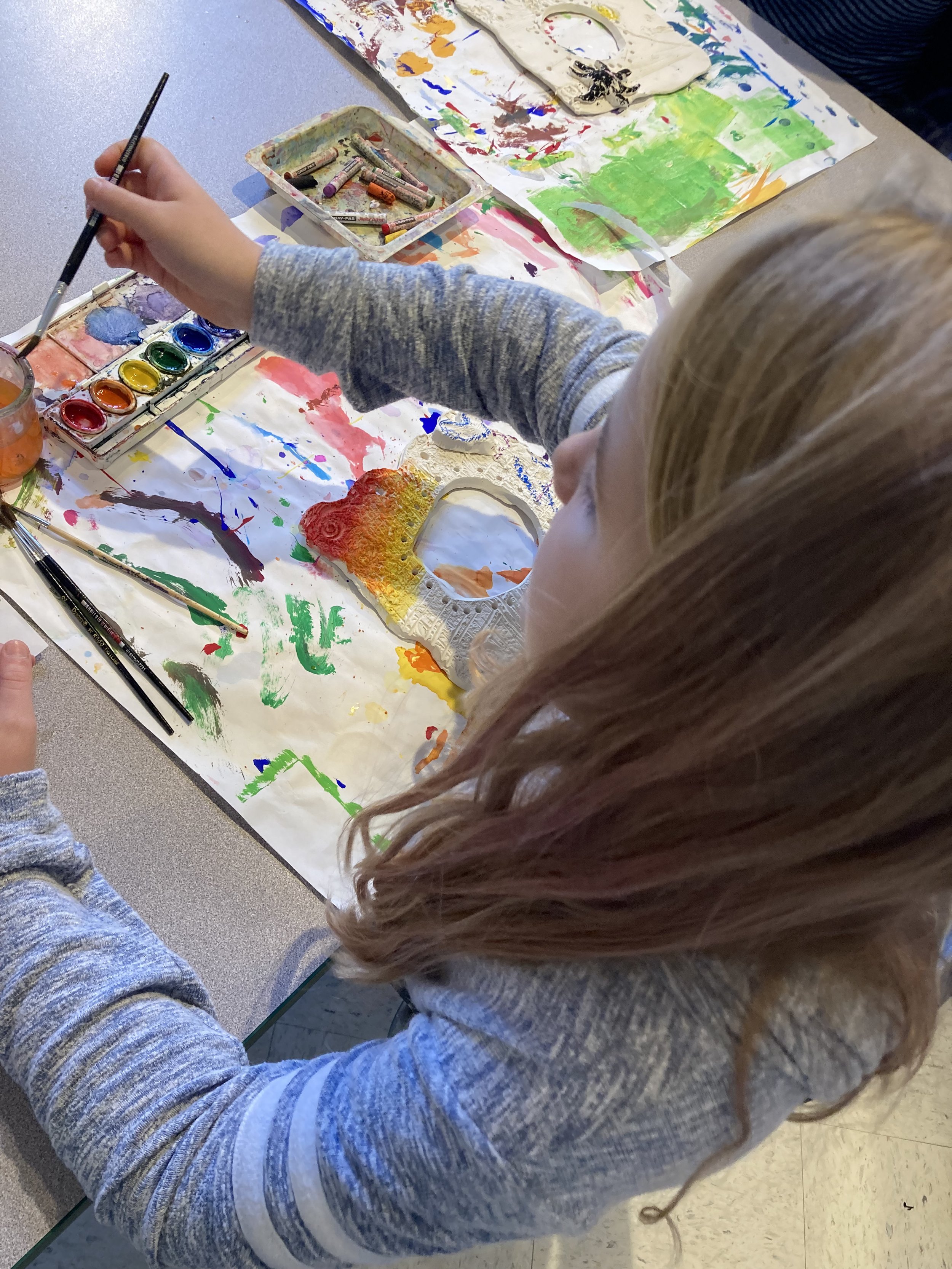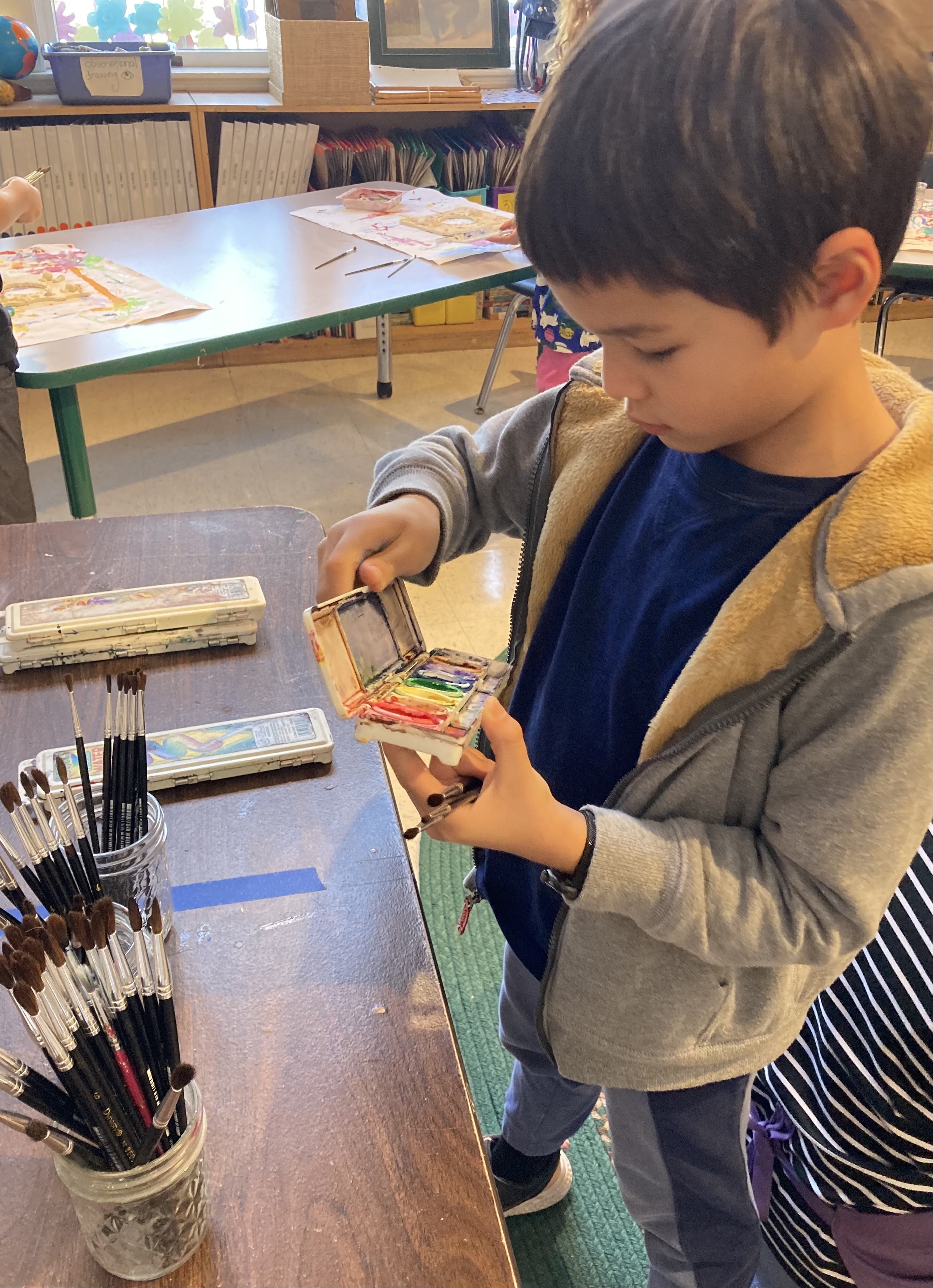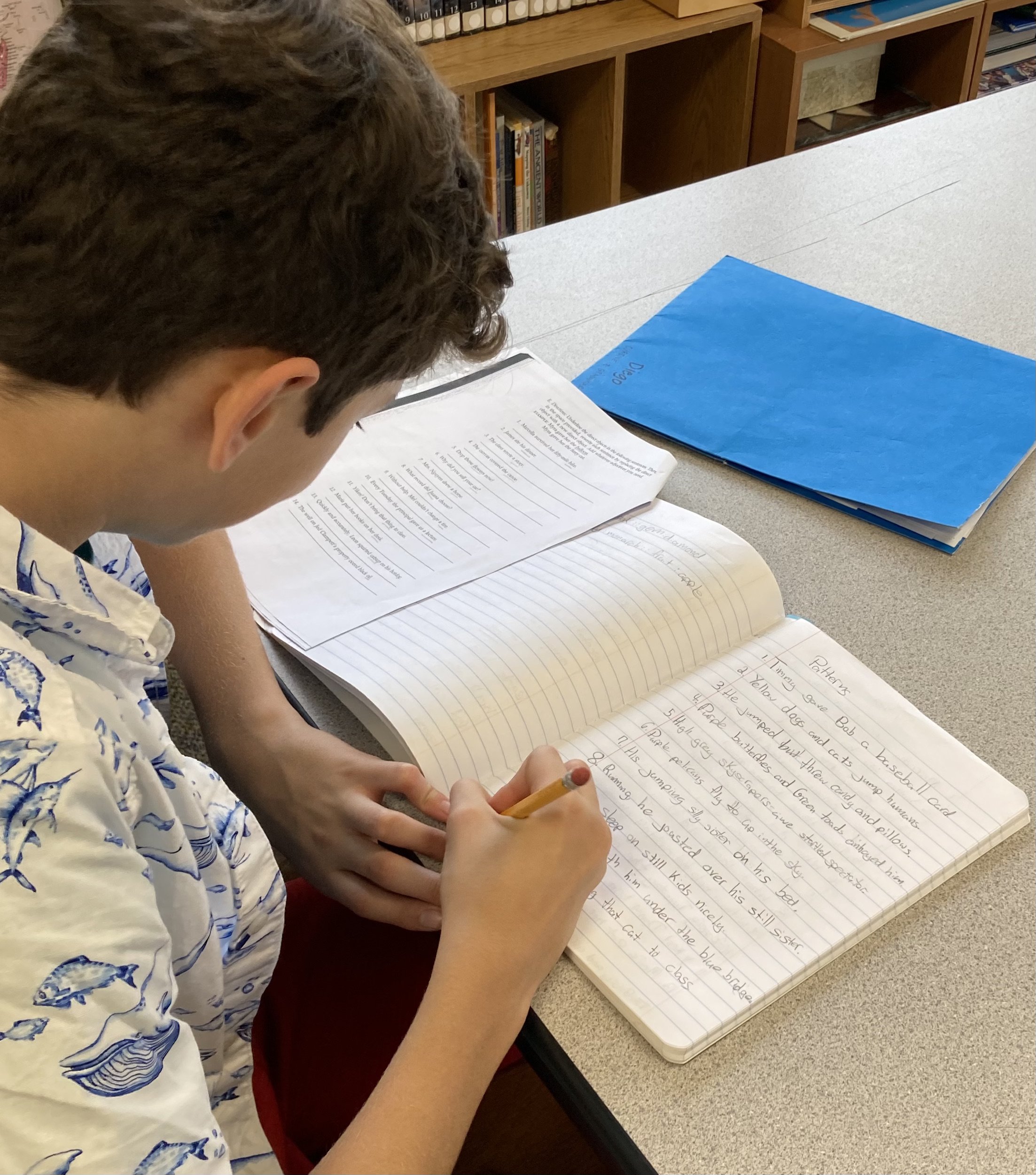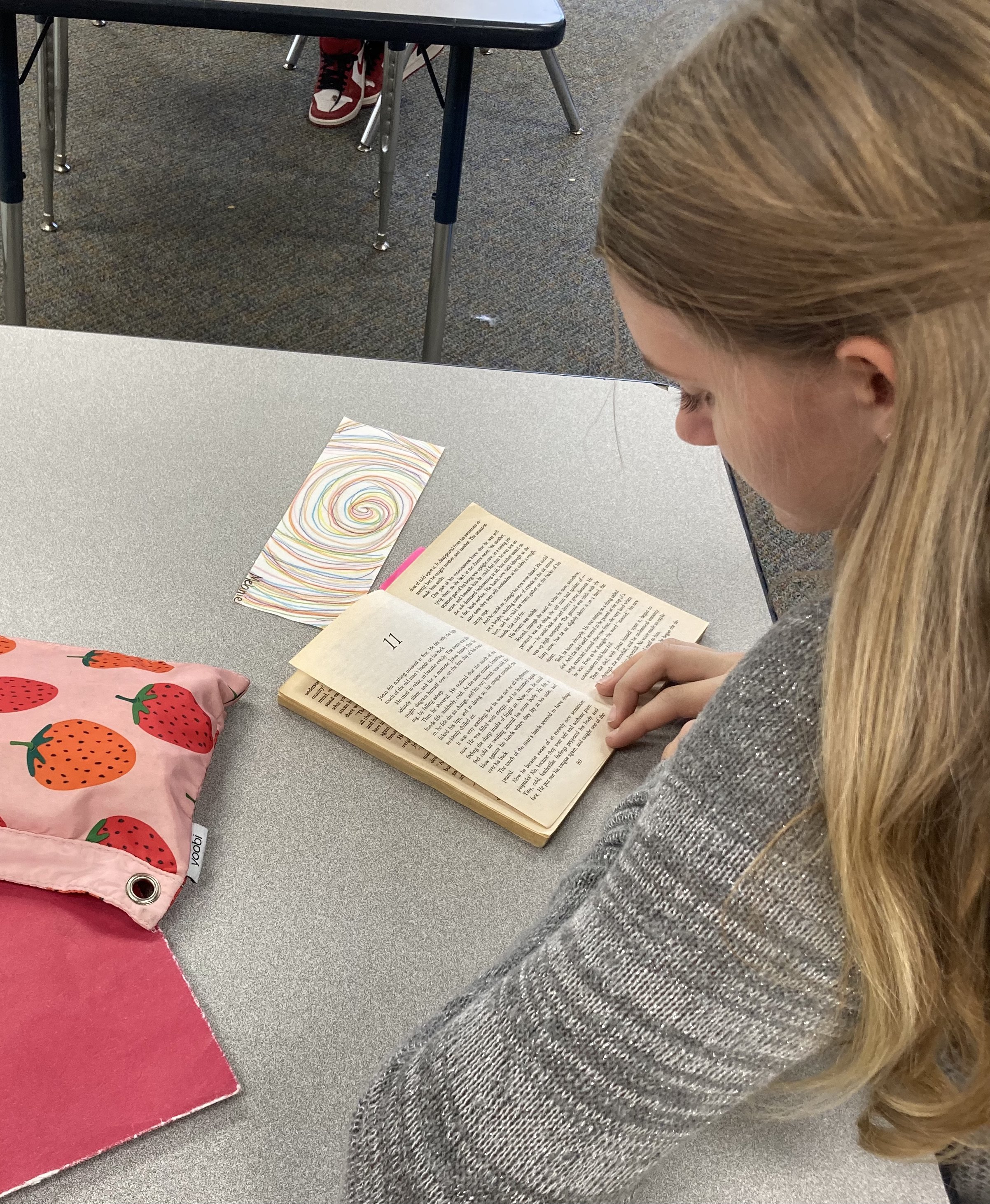Beginning with the 2020-2021 school year, the Bridgeview Montessori Board of Trustees decided to a adopt three-year pilot program, the Montessori Milestone. This program awarded a Montessori Milestone annual tuition credit of $300 to those returning students entering the final year of their programs; Kindergarten, 3rd Year and 6th Year. With this 2022-2023 school year, the pilot program is complete and was a smashing success!
GREAT NEWS. The board has decided to once again embark on the three-year Montessori Milestone program. We are thrilled to be able to recognize our families for their commitment to our school and to honor one of the many brilliant aspects of Montessori pedegogy, the importance of the three year cycle. Please check out Cindy Conesa’s article from the Kinderhouse Montessori School blog. Cindy sums up the power of the third year beautifully. ~ Suzanne Lawson
The Montessori Three-Year Cycle and the Importance of the Third Year
A Kindergarten student follows his work plan by choosing a book to read with his teacher.
The three-year multi-age Montessori classroom is not an arbitrary configuration of convenience, but an implementation of the “planes of development,” or four distinct periods of growth: 0-6 years; 6-12 years; 12-18 years; and 18-24 years. Dr. Montessori, along with other developmental scientists, observed that the child’s development follows a path of successive stages, each with its own particular needs and dispositions—cognitive, social, physical, moral and emotional; and much occurs during each plane as preparation for the succeeding one. It follows then that the more fully the child realizes his potential in each plane, the stronger the foundation for the next stage of development.
Each plane is divided into two sub-planes, on which Montessori classrooms are based (0-3 years; 3-6 years; 6-9 years; 9-12 years; 12-15 years; and 15-18 years). Montessori teachers are trained to meet the child’s needs with a three-year developmental curriculum oriented to the inherent characteristics of a particular plane. The curriculum, like development, is sequential, and by completing the three-year cycle in an environment specifically designed to address her developmental needs—whether in Primary, Elementary, or Secondary—the child’s possibilities for working toward her potential are maximized.
A Kindergarten student practices independently packing a lunch.
Given “normal” development, most children will reach the milestones of a given developmental phase within the appropriate time frame, but as children do not all develop at the same rate, some will reach specific markers sooner or later than other children. This is one important reason why Dr. Montessori grouped children together in three-year spans: all are working toward the same developmental goals characteristic of their respective plane. The third year in a Montessori classroom can be thought of as the “capstone” in this respect; literally the “finishing stone of a structure,” it is also the “culminating academic experience for students.” This is truly where all the pieces come together, where the child’s learning is solidified, his knowledge consolidated, as new possibilities for growth and learning begin to emerge.
A Third Year creates with conviction.
The third year in a Montessori classroom is also referred to as the leadership year. It can be helpful to think of first year children as the “explorers,” second year students as the “experimenters” and third year students as the “experts.” Having learned to take care of herself in the classroom and to work independently during the first two years, the child in her third year is developmentally ready to put her background to use as a classroom leader–an academic and social role model—while she continues building her own skills. This increases her self-confidence which, together with her good work habits, puts her in a position of readiness for her upcoming experience in the Elementary classroom.
A Third Year checks his materials to be sure he has what he needs.
A Sixth Year expresses her individuality.
Of course, all children go through the same developmental phases whether or not they are enrolled in a Montessori program. So what are the advantages, having completed two years of Montessori Primary, in completing the third year rather than moving on to another classroom setting? The answer lies in the “sensitive periods” characteristic of each developmental plane—the natural dispositions that children have toward certain activities during specific times in their development. Dr. Montessori designed her elegant materials to directly correspond to the sensitive periods. During the Primary years, for example, the child is sensitive to order, concentration, coordination, and independence; everything in the Primary environment addresses these sensitivities. As the older child is sensitive to reason and abstract thinking, the materials in the Elementary classroom become less and less concrete. Further, the Great Lessons are meant to appeal to the older child’s burgeoning imagination.
A Sixth Year writing without distraction.
What sets Montessori education apart from many other approaches is that the child is able to independently seek out and find the particular stimuli to satisfy his needs, as dictated by the sensitive periods, and to develop mastery of related skills. In this way too, with guidance, he takes ownership of and responsibility for his learning—an opportunity not found in traditional school settings.The third year—the year of consolidation, leadership, and readiness for the next phase—is of paramount importance to the child’s optimal realization of possibilities and development and, as such, should be regarded as a crucial step in the Montessori educational process.
By Cindy Conesa
A Sixth Year with concentration and poise.
